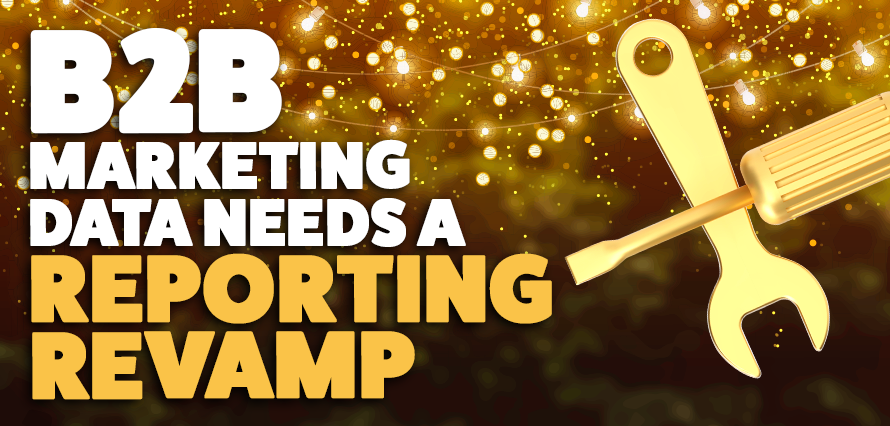May 15, 2025

We’ve all been there – reeling off the results of our latest B2B marketing campaign with glee, while the recipient’s eyes glaze over. Whether it’s informing CFOs or CMOs of our latest success, we need to tailor our reporting accordingly and make them far more impactful.
You may have seen our latest live with our CEO Katy and Barnaby Barron from Cision. The title ‘Reporting Hell to Storytelling Heaven’ couldn’t have been more apt. Reporting as a marketing task AND as something to digest has become laborious – and while AI tools can help make the task that bit faster, the final tables and charts don’t help us present results in the best light. In fact, it makes them forgettable.
Any marketer reading this will remember a campaign that they checked on multiple times a day – eagerly looking at the CTR, the engagements – seeing how many people the ad sets were going to. The excitement builds as you see the performance go well above benchmark and all that time in creative brainstorms and planning sessions has yielded success.
But when it comes to sharing your success with the wider team, and particularly the more senior people in your business – the results are met with silence.
Confusion, frustration and altogether a loss of motivation sets in.
But it’s time to put yourself in the shoes of those senior people – the CMO and CFO.
What do they see in your data?
Benchmark boardroom boredom
We all love when those benchmark reports for social or advertising come about every year – it gives us a foundation to build on and a number to aim for. But in reality, those benchmarks don’t translate to the boardroom.
We’ve all had campaigns with CTRs that hit 2%, or engagement rates of 3-4% and feel a wave of pride. But the reality is these are vanity metrics to those who hold the purse strings. Post-click action is everything to the boardroom.
We all know it’s important to set up tracking elements of campaigns to ensure any leads are properly recorded and website traffic activity can be attributed – and that’s where some campaigns whether social or other digital tend to fall short.
Post-click attribution is everything when it comes the B2B buyer journey as well as the boardroom. Don’t just say ‘the engagement rate was above benchmarks’, or that ‘the CPC was lower than normal’ – translate that into value – the ‘click-throughs to website were X and we can see that X number of users carried on their journey’.
Reporting revamp
Part of making that report more impactful to the boardroom is using less words, more visuals. Translate those 20,000 impressions into something they can visualise – such as a sports stadium capacity or the height in feet of a mountain in the Alps.
Keeping reports shorter anyway is key for their attention span – so try and use visual elements ahead of numbers. Our recent live uncovered that in more detail:
“…if you just report that data – that cold, factual objective – what happens is that typically, only 5% of people will remember the data that you are telling them a month after you’ve told them that data. So that cold, factual bit gets forgotten very quickly, whereas that kind of story piece – the warm, subjective piece – 12x more people will remember that a month later if they’re asked about it. So, it’s 5% of people remembering versus 60% of people remembering.”
So, in summary:
- Use visual storytelling to make reporting pack a punch more memorable
- Use post-click successes beyond vanity metrics
Combined, this should make the board take more notice!
Agree? Disagree? Let us know!